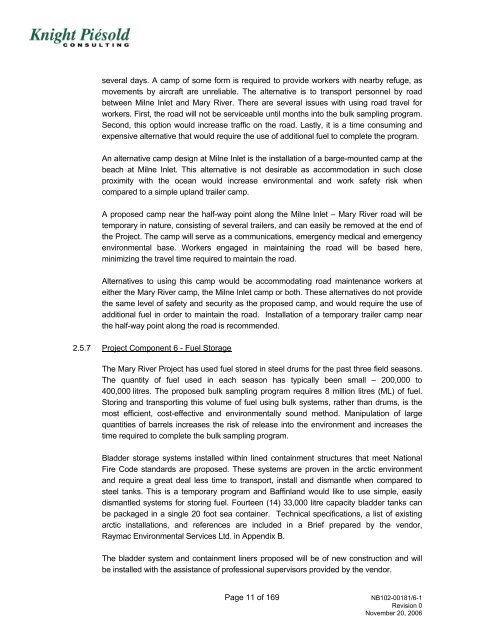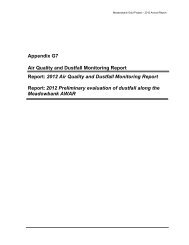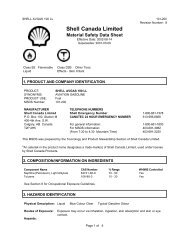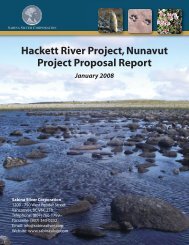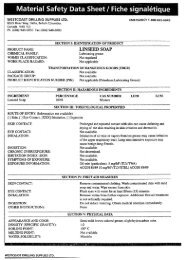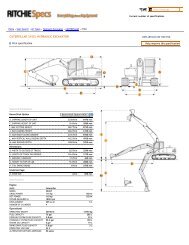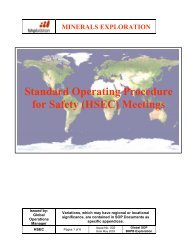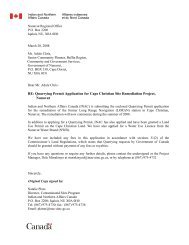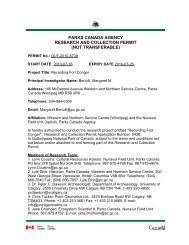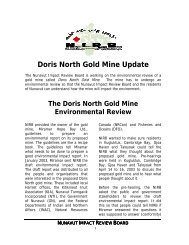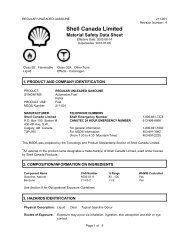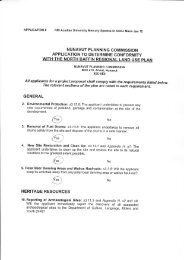061211-Environmental Screening Report-IMAE.pdf - nirb
061211-Environmental Screening Report-IMAE.pdf - nirb
061211-Environmental Screening Report-IMAE.pdf - nirb
Create successful ePaper yourself
Turn your PDF publications into a flip-book with our unique Google optimized e-Paper software.
several days. A camp of some form is required to provide workers with nearby refuge, asmovements by aircraft are unreliable. The alternative is to transport personnel by roadbetween Milne Inlet and Mary River. There are several issues with using road travel forworkers. First, the road will not be serviceable until months into the bulk sampling program.Second, this option would increase traffic on the road. Lastly, it is a time consuming andexpensive alternative that would require the use of additional fuel to complete the program.An alternative camp design at Milne Inlet is the installation of a barge-mounted camp at thebeach at Milne Inlet. This alternative is not desirable as accommodation in such closeproximity with the ocean would increase environmental and work safety risk whencompared to a simple upland trailer camp.A proposed camp near the half-way point along the Milne Inlet – Mary River road will betemporary in nature, consisting of several trailers, and can easily be removed at the end ofthe Project. The camp will serve as a communications, emergency medical and emergencyenvironmental base. Workers engaged in maintaining the road will be based here,minimizing the travel time required to maintain the road.Alternatives to using this camp would be accommodating road maintenance workers ateither the Mary River camp, the Milne Inlet camp or both. These alternatives do not providethe same level of safety and security as the proposed camp, and would require the use ofadditional fuel in order to maintain the road. Installation of a temporary trailer camp nearthe half-way point along the road is recommended.2.5.7 Project Component 6 - Fuel StorageThe Mary River Project has used fuel stored in steel drums for the past three field seasons.The quantity of fuel used in each season has typically been small – 200,000 to400,000 litres. The proposed bulk sampling program requires 8 million litres (ML) of fuel.Storing and transporting this volume of fuel using bulk systems, rather than drums, is themost efficient, cost-effective and environmentally sound method. Manipulation of largequantities of barrels increases the risk of release into the environment and increases thetime required to complete the bulk sampling program.Bladder storage systems installed within lined containment structures that meet NationalFire Code standards are proposed. These systems are proven in the arctic environmentand require a great deal less time to transport, install and dismantle when compared tosteel tanks. This is a temporary program and Baffinland would like to use simple, easilydismantled systems for storing fuel. Fourteen (14) 33,000 litre capacity bladder tanks canbe packaged in a single 20 foot sea container. Technical specifications, a list of existingarctic installations, and references are included in a Brief prepared by the vendor,Raymac <strong>Environmental</strong> Services Ltd. in Appendix B.The bladder system and containment liners proposed will be of new construction and willbe installed with the assistance of professional supervisors provided by the vendor.Page 11 of 169NB102-00181/6-1Revision 0November 20, 2006


